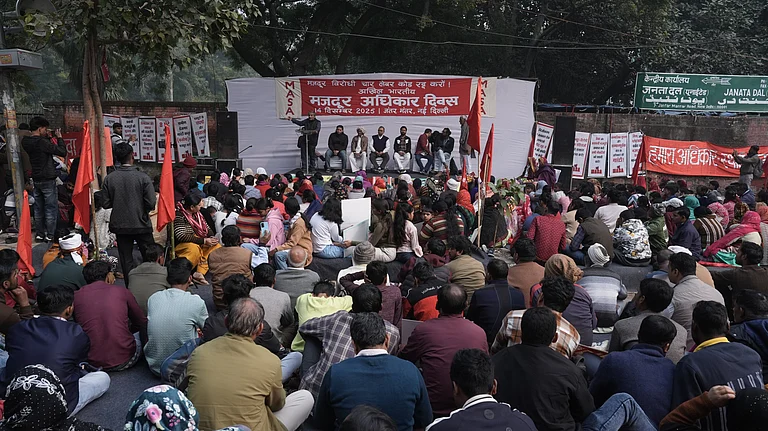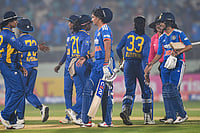Wild Green Registan

The pace of life here is astonishing. Of the wildlife, that is. Wednesday evening, we had a four-foot cobra, Thursday night a spider as big as my hand, and Friday night a five-inch scorpion. I’d have left the cobra alone, but the dogs first ‘treed’ it, then scared it down and mauled it. (I’d never heard of dogs expertly hunting a snake.) Unhappily, I had to finish it off. The youngest cat had the furry spider for an after-dinner snack, needing no help, which was lucky. The scorpion was in the kitchen and had to be dispatched, shuddering (both of us).
Regi George is a Buddhist and lets these creatures go their ways. We don’t have his training, or his detachment. Regi and Lalitha are away trekking in Ladakh, their first break in five years. They go to the Himalayas when they can get a month off, which is rare, but my wife Kavery said she’d see the patients, and the doctor-couple can rely on their staff to run the hospital. They’d wanted to go to Manasarovar, but the MEA blanched when they saw Regi’s name. It might offend fellow pilgrims, they said. So no one without a Hindu or Buddhist name can ever go there? Isn’t that against Regi’s rights as a citizen?
Sittilingi is a hamlet in Dharmapuri district of northern Tamil Nadu. You think of Dharmapuri as arid, but this is a lush little valley. Four-fifths of the population are Malaivasis (literally hill-dwellers)—tribals. There are still communities, in the southern hills, who are six hours’ walk from the ration shops and 12 from health care. They have all the usual diseases, and modernity has brought its own.
Our friends here blame TV for much of the breaking down of traditional systems. Fights over money, drink, adultery, venereal diseases all make this society much like the rural non-tribals’. The Malaivasis are poorer, and they also have more to lose. But at least the Dravidian movement, and various independent do-gooders, have given them a sturdy freedom from servitude. I’m still figuring out what makes Sittilingi different from Dandakaranya.
Kaapi Bar ’n Lounge
Talking of TV, July 21 was a big day in Kottapatti, which is the nearest village that can boast of a horse. (It’s made of clay, for the gramadevata.) The DMK was fulfilling its election promise. The village officer’s rooms were swamped. “There were 1,900 sets distributed here,” said Kannan, the young man who has charge of the old temple. I saw one lady walking along the street carrying two TVs on her head, and two-wheeler pillions were piled three-deep. Those who already had TVs, like the lady behind Santosh Kaapi Bar, were a little scornful of the newly rich. She’d collected her set, though. When I left, a well-dressed couple had just come to visit her in an Indica.
There’s money here, even though it’s all farmland. Kannan has a grain agency—he says vyavasayam (business) not “shop”, so he exports it. He has a bike and sandal paste is nobly splashed across his brow. He knows some of the local legends and shows me the old fort (“Kotai” means fort) perhaps built by one of the Nayakars after Vijayanagara’s fall. There was a moat with crocodiles around it then, it’s now filled in.
The temple he looks after was not open for viewing. What I could see—a lintel, some half-buried sculpture and the gopuram—was at least 300 years old, probably much more. The devout had added a concrete antechamber to the shrine, and actually whitewashed the whole thing, including the gopuram. I averted my eyes. But the good thing about these small temples is they don’t need Brahmin priests. A Naidu does the honours here. As in most of Tamil Nadu, the native people are proud of their self-sufficiency.
Rain Rice, Sun Rice
In the Sittilingi valley itself, there is a wide variety of millets grown. There is also some rice, some cotton, turmeric and diverse lentils. Regi told us there used to be—long before his time—many different kinds of paddy, for different seasons and occasions. One for times of drought, one for flood, and so on. There was even one for pregnant women. IR 8 and its cousins swamped all these in the collectivist ’70s. After 17 years of hard labour, Lalitha and Regi think their medical model is now competent and sustainable, so they are working with the community. As is happening all over India, Regi is encouraging the other farmers to breed the old varieties again on small plots so they don’t lose it.
A Hiss On The Box
Last evening, just when Kavery was leaving to come home they brought a snake-bite victim to the hospital. The man was perfectly sure what snake had got him. “Gobra,” he said. He responded to antivenin and they sent him to Salem, the nearest city. I thought of Nagin, where snakes fly through the air and their guilt-ridden victims drop dead at once. Really, our film industry has a stake in keeping people ignorant. The sooner the government begins to censor TV serials, the better, is what many of us would say.





















